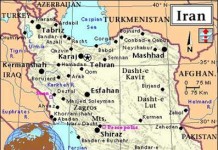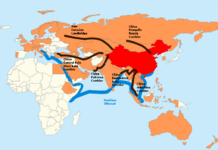 Does The Road To Peace In Afghanistan Originate In Kashmir?
Does The Road To Peace In Afghanistan Originate In Kashmir?
By Arif Ansar
Context
The conflict in Afghanistan has been continuing for the last 30 years or so. The present phase got underway after the tragic incident of 9/11. US launched a campaign against the perpetrators of the attack, Al Qaeda, and those that provided them refuge, the Afghan Taliban.
While the Al Qaeda menace has been controlled for the most part in the region, the Taliban have remained a lethal force even after billions of dollars were spent to counter them. Under the Obama administration’s troop surge, more than 100,000 soldiers were deployed in Afghanistan.
The question though remains, why have Taliban not been managed even after spending so much in blood and treasure. An inaccurate answer to this question can and have caused many new complications, while prolonging the war.

The causes for this not only lie inside Afghanistan but also relate to the India-Pakistan rivalry, including the impact of Iran-Saudi tussles in the Middle East. In addition, the global power tensions between US, China, and Russia have escalated the tugs of the global balance of power. There is also a need to understand the transformation of the extremism phenomenon that has lead the emergence of Daesh to replace Al Qaeda.
In this complicated dynamics, the Indian motives in Afghanistan are the least understood, and perhaps hold the key to make progress on lasting Afghan peace.
Lack of Afghan Purpose
If we look at the reasons internal to Afghanistan, there are factors connected to the Afghan political, economic, and security capacity to continue to fight this seemingly endless war. In January, President Ashraf Ghani himself admitted that without US support, Afghan Army couldn’t be sustained for six months.
Any army needs to have clear-cut goals and purpose in order to put up a decisive fight; this is especially true when the Afghans are fighting their fellow countrymen. The Afghan Army is fighting Taliban, including extremists like Al Qaeda and Daesh, with limited military capability, and has to rely on air and advisory support to conduct operations.
On the other hand, Afghan Taliban have a transparent message that they are conducting a jihad against foreign occupiers, historically an honorable Afghan occupation. Their most apparent demands for peace talks include complete withdrawal of foreign troops, and to negotiate directly with the Americans, and not its ‘puppet’ Afghan government.
As opposed to this, the coalition demands from Taliban a clear break with global jihadists like Al Qaeda. Furthermore, to renounce violence and accept the present Afghan constitution and government. On the surface, all major external stakeholders have demanded that peace process should be Afghan owned and Afghan led, a noble aim indeed.
Who Can Bring About Afghan Reconciliation?
Many talk about the Afghan Reconciliation in simplistic terms. Since the kinetic approaches have not worked, it is automatically assumed the next step should be the peace process. There are many limitations to that. At this point, Afghan Taliban have splintered into many groups and it’s not clear who can politically represent them, and has the sway over all groups.
Another premise that accompanies the above argument is that while there are many stakeholders to the conflict, the peace process should be Afghan owned and Afghan led. Put it more succinctly, the Western backed Afghan government should be spearheading the peace initiative. With the interests of many regional and global stakeholders at stake, to expect the weakest partner to perform this job is hoping for the impossible.
The Afghan reconciliation is an auxiliary to Afghan Peace Process. Meaning that the Afghan reconciliation by itself will not bring peace to Afghanistan – in absence of settlement between the regional and global stakeholders, particularly India and Pakistan, and the US and China.
A successful approach to Afghan peace should first involve careful scrutiny of the interests of the key stakeholders, starting from the Afghan government and different factions of Afghan Taliban. The motives of the fragile Afghan government are not clear on why it would want to share power with Afghan Taliban. They lack credibility and are corrupt. The political leadership benefits the most from the continuing infighting in Afghanistan as it attracts millions of dollars of military and economic support, which provides opportunities for more corruption.
The turmoil that resulted from the 2014 Afghan election was only settled after former US Secretary of State John Kerry assembled a Unity Government and developed a power sharing formula between the CEO and the President. This provides one example of how a facilitated wider power-sharing model, which includes the Afghan Taliban, could work.
The uncertainty regarding the much-delayed parliamentary elections has continued. Many of the election reforms are still not in place and there is little time left to do that. The presidential elections scheduled for mid-2019 could very well result in another phase of political chaos while the security situation of the country dwindles further. This is one more reason to quicken the pace of finding a peace formula for Afghanistan.
Understanding the Indian Position on Afghan Reconciliation
The media attention is usually fixated on the American interests and that of Pakistan as they are linked with the Afghan reconciliation. However, this debate lacks assessment of those players that do not want Afghan peace process to be successful, for example India. How does it benefit or lose from peace in Afghanistan? To talk about reconciliation in Afghanistan in the absence of this analysis will not be doing justice with the objective of achieving peace.
The country is perhaps the least interested in Afghan reconciliation. And we only need to look at the pre 9/11 Afghanistan to understand the reasons for that.
This was the time when militants and extremists with regional and global ambitions were cross-pollinating in Afghanistan after they had fought the jihad against the Soviets in the 80s, and this resulted in several attacks inside India, and ultimately leading to 9/11.
For India the nightmare scenario would be the return of the Afghan Taliban and other religious zealots, which would be the outcome of any kind of Afghan reconciliation. It fears this will have a direct impact on the insurgency in Kashmir. While India provides economic aid to Afghanistan and supports development projects to improve its soft image, the main aim of India would be to prevent any kind of Afghan patch-up that puts the Afghan Taliban back in the government. Instead, it has focused all its efforts to malign the image of Pakistan as a supporter of extremists in Kashmir and Afghanistan.
Indian objective would be to weaken Pakistan to such an extent that it abandons any claim on Kashmir, or accept a resolution of the conflict based on Indian terms. This is not much different than what just transpired in the Israeli-Palestinian conflict. The politics of the Middle East has changed to such an extent, that the traditional supporters of the Palestinian cause like Saudi Arabia and Egypt have moved their position closer to that of Israel. This changing political landscape recently resulted in the Trump administration’s decision to move the US embassy from Tel Aviv to Jerusalem.
Based on this assumption, Indian strategy has been to use its increasing clout to sideline Pakistan in the international arena, and to short-circuit channels through which Pakistan has traditionally garnered support, such as the GCC and the US. And in this endeavor, it has allied with Israel. In this context, the emerging Indian Middle East posture is interesting to watch and quite risky for Pakistan.
India’s Emerging Middle East Posture
Pakistan-India tensions are tied to the Kashmir issue and the associated skirmishes on the LOC. This rivalry has now fully engulfed the Afghan conflict, where Pakistan blames India for using the turmoil in Afghanistan as a stepping-stone to destabilize and weaken Pakistan. It does this by carrying out terrorist activities within Pakistan, and by supporting Baloch separatist. On the other hand, India blames Pakistan for supporting the Kashmiri militants and Afghan Taliban.
Despite years of dialogue between US and Pakistan, US has gradually given more credence to the argument presented by India. Moreover, the maturing US-India strategic ties are a source of great concern for Pakistan.
In addition to the US, Pakistan has also enjoyed strong support from the Middle East nations, especially from the GCC. In times of emergencies and political crises, Pakistan has always been able to harness political and financial support from its oil rich Islamic brethren.
However, due to the tremendous change being brought upon by the campaign against extremism, the Iran-Saudi tensions, and the transformation in the energy industry, the geopolitics of the Middle East is changing dramatically. India is positioning itself to exploit the opportunities being created to undermine the customary support Pakistan has enjoyed in the region.
This was recently at display when Prime Minister of Israel visited India in January for six days, followed by Modi’s trip to Palestine in February. In his meeting with the Palestinian leader Mahmoud Abbas, he ironically backed the cause of independent Palestine. India has historically supported the Palestinians but its extra-ordinary close ties to Israel makes a mockery of this claim. And these trips have taken place in the aftermath of highly controversial US decision to move its embassy from Tel Aviv to Jerusalem. During his trip, he also visited UAE, Oman, and three nations of West Africa.
The Indian analysts projected the nations Middle East diplomacy as an attempt to balance its ties with the Arab states that employ a large number of Indian workers. However, this is hardly digestible when other Arab nations such as Saudi Arabia, UAE, and Egypt have themselves moved closer to the position of Israel. Reportedly, it was due to their private consent that emboldened President Trump to take the decision of moving the embassy to Jerusalem.
Needless to say, during this timeframe Pakistan was itself busy with hosting President Abdullah II of Jordan. Meanwhile, Pakistan’s Army Chief visited Saudi Arabia in early February and met with Crown Prince Mohammad bin Salman. On February 20th came the decision to post a contingent of Pakistani troops to the Kingdom for training and advisory mission.
The reasons for aggressive Indian Middle East diplomacy are multidimensional. With large Muslim population, India desires to project its suitability for the seat on the reformed UN Security Council, and as a credible future arbiter in the almost dead Middle East Peace Process. Moreover, to undercut the customary support for Pakistan in the Arab world for the Kashmir cause and matters related to Afghanistan.
Conclusion
The above assessment provides several clues on how to approach the Afghan peace process. Firstly, the motives of the Afghan government need to be looked at closely. The reason Obama administration gave a timeline for the American withdrawal was not to alert the enemy but recognizing history. Without Afghan’s taking responsibility for their country, the nation will remain dependent on the West and billions will continue to be wasted. And as soon as the aid dries up, the infighting will start.
Second, the missing component on Afghan reconciliation has to do with India. India should be expected to clearly lay out a minimal acceptable formula for Afghanistan. And it cannot be that it wouldn’t accept Afghan Taliban in any potential power sharing formula. Moreover, without entering into a dialogue with Pakistan on the resolution of Kashmir, it risks a wider conflagration.
Thirdly, to achieve Afghan Peace, will require Western facilitation like the power sharing model crafted in 2014 with the active US support.
On the flip side, Afghan Taliban would have to accept any power sharing formula that results from the negotiations, and that their religious aspirations would have to be attained through a consultative mechanism. Moreover, they would have to break ties with global extremists. They should recognize the leverage of being a bulwark against the aims of Deash in the region.



